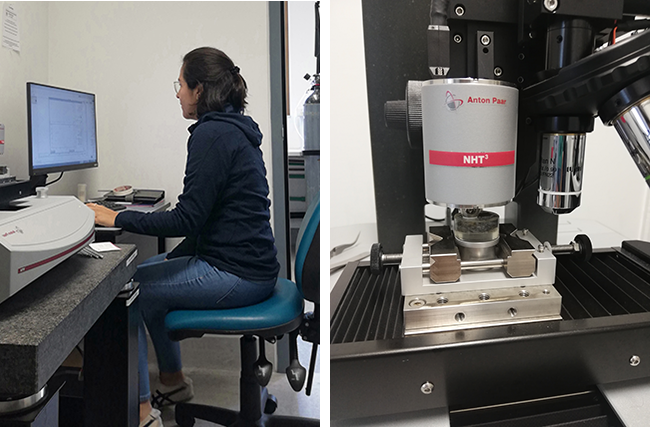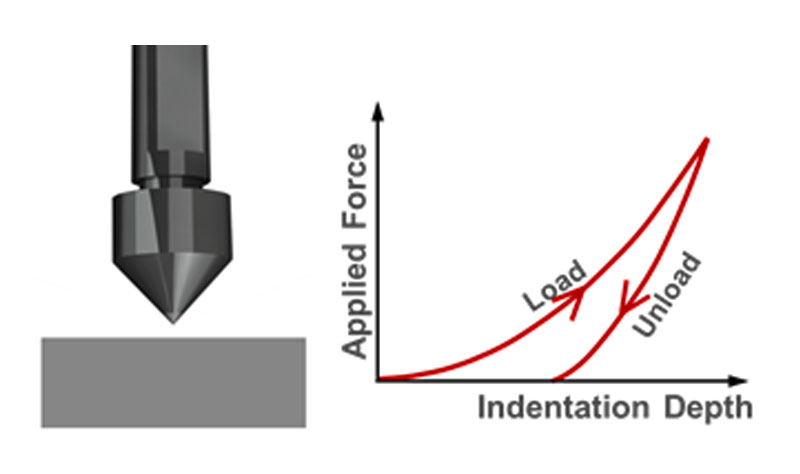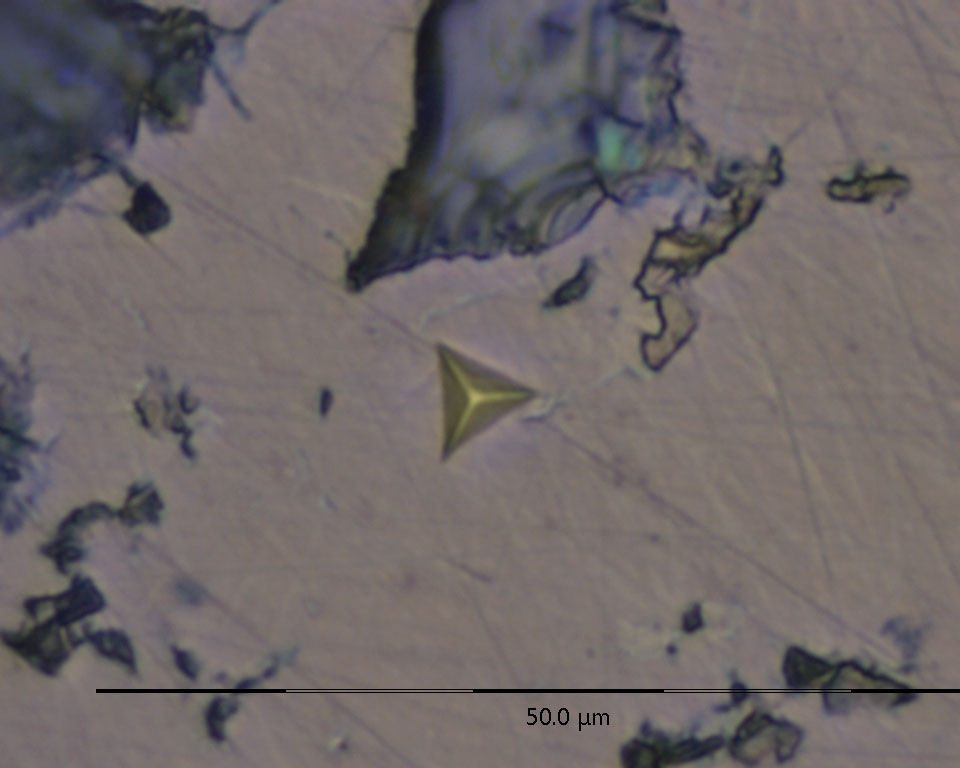Unlocking the Secrets of Mineral Breakage using nanoindentation
Carolina Carvajal, a PhD candidate from Chile, recently visited the Materials Characterisation and Fabrication Group at the University of Melbourne as part of her research funded by the ARC CoE for enabling the eco-beneficiation of minerals.
While I was visiting the University of Melbourne, I tested mineral samples utilising nanoindentation techniques and optical microscopy. My investigations focus on the study of mechanical properties and the assessment of mineral breakage, particularly breakage relative to grain boundaries.

Nanoindentation is a powerful technique that enables us to measure the mechanical characteristics of a material. A pyramid-shaped tip is used to apply loads that deform the surface plastically or elastically. By taking a differential depth measurement, we can determine the hardness and elastic moduli of the surface. When the force applied exceeds the strength of the material, cracks are generated, enabling us also to measure the fracture toughness.

Instrumented indentation testing (IIT)

Through my PhD research, I am contributing to a better understanding of a rock's resistance to deformation and failure within comminution machines. By relating standard rock mechanics properties used for the characterisation of rock stability and tunnelling in underground mining with the results of single particle breakage tests and the liberation characteristics of the products, I am attempting to decouple mechanistic ore behaviour and ore breakage response.
This area of research remains largely unexplored, yet if successful, it could enable the development of improved processes for the selective breakage of minerals while reducing the energy consumption associated with mineral beneficiation.

